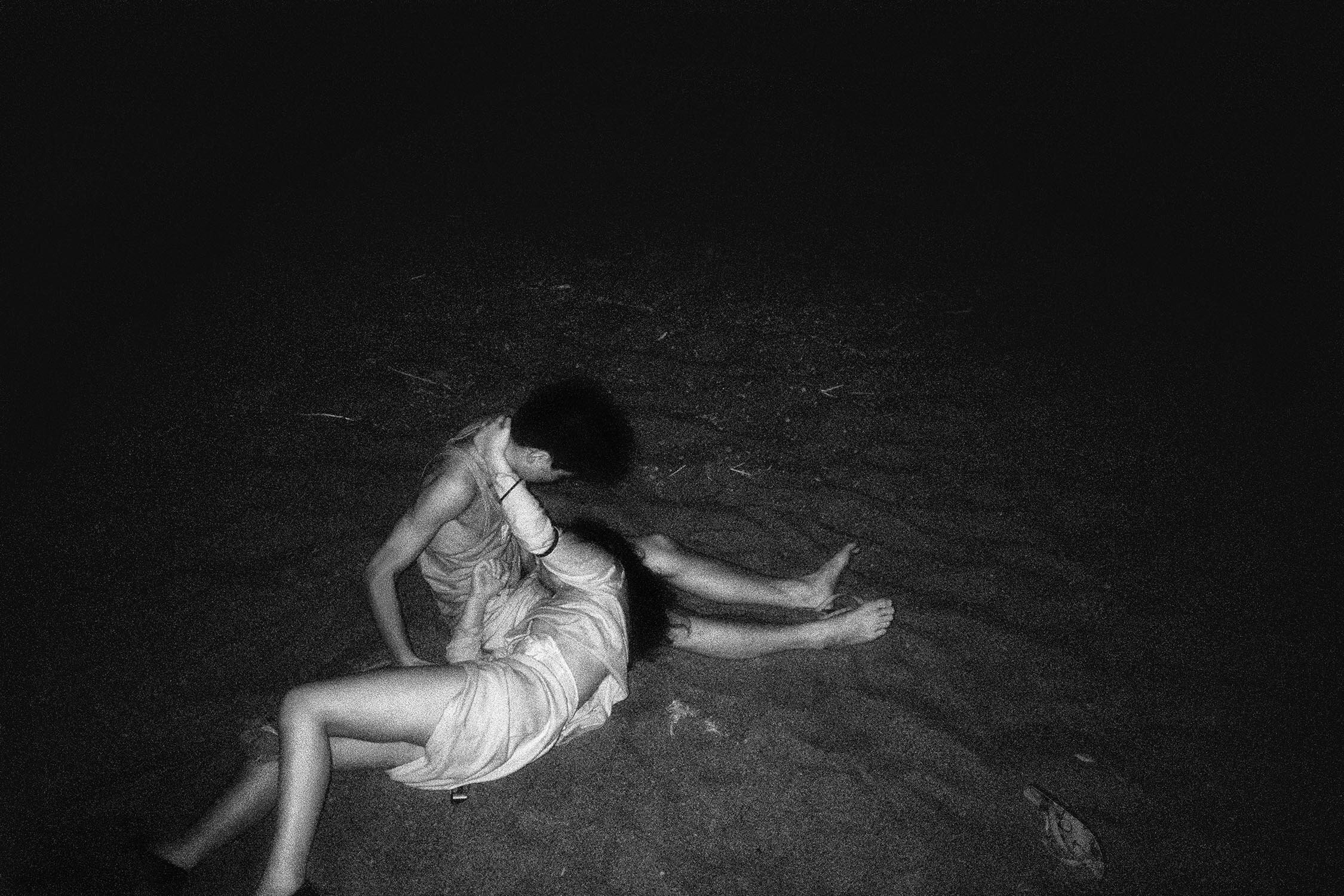One evening in the early 1970s, artist and photographer Kohei Yoshiyuki was walking through Chuo Park in Tokyo when he noticed something unexpected. It was not the couples tucked discreetly into the shadows—public parks had long been a refuge for lovers seeking privacy from family and the constraints of small living spaces—but rather the figures surrounding them. Small groups of silent spectators moved through the foliage, pressing forward to observe, then retreating, only to advance again. Yoshiyuki had stumbled upon a hidden ritual, an unsanctioned theater of desire and transgression, and he was captivated.
He returned night after night, embedding himself within the voyeurs, eventually photographing them with infrared film. The resulting images, stark in black and white, are eerie and unsettling, charged with a disquieting energy. The high contrast of night photography renders them almost spectral: figures crouch in the undergrowth, eyes fixed on unwitting lovers, their presence both furtive and unignorable.
In 1979, Yoshiyuki exhibited the series, titled The Park, at Tokyo’s Komai Gallery. The presentation was as provocative as the work itself. The gallery was darkened, and each visitor was handed a flashlight, invited to illuminate the photographs as they walked through. Printed life-size or larger, the images transformed the viewer into a participant, complicit in the act of looking. The show, though a sensation among Tokyo’s cultural elite, led nowhere. Yoshiyuki’s identity remained obscure; after the exhibition ended, The Park all but disappeared.
It was not until the early 2000s that the art world rediscovered Yoshiyuki. In 2006, British photographer Martin Parr included The Park in The Photobook: A History, Volume III, reintroducing the work to a wider audience. A year later, New York’s Yossi Milo Gallery mounted a major exhibition, reigniting interest in Yoshiyuki’s photographs. From there, the work gained momentum, appearing in Exposed: Voyeurism, Surveillance, and the Camera at the Tate Modern in 2010, entering the San Francisco Museum of Modern Art’s permanent collection the same year, and joining exhibitions at The Met in New York and the Venice Biennale in the years that followed.
The art world has always been preoccupied with voyeurism, but the culture at large has also grown more attuned to the nuances of consent. In the decades since Yoshiyuki captured his images, our understanding of ethical boundaries has sharpened. Voyeuristic Disorder is now classified as a paraphilic condition, diagnosed only when compulsions become harmful or intrusive. At the same time, ethical avenues for voyeuristic desire have emerged and adults can find consensual ways to peep or be peeped.
In 2007, Yossi Milo Gallery published The Park as a monograph, with a foreword by contemporary photographer Nobuyoshi Araki. Copies of the original edition surface occasionally at wonderful bookstores like Artbook D.A.P. and Dashwood Books in New York. For those seeking a more accessible version, Yossi Milo reissued the book in 2019, though availability remains limited.
Today, The Park occupies a singular place in the history of art books—both widely influential and persistently elusive. When you’re holding the book, Yoshiyuki is handing you more than a series of photographs but also means of interrogation: a flashlight to navigate the murky intersection of desire and consent. Though his images capture a moment long past, the questions they pose remain unresolved, echoing in our contemporary discourse on privacy, ethics, and the act of seeing and being seen.


